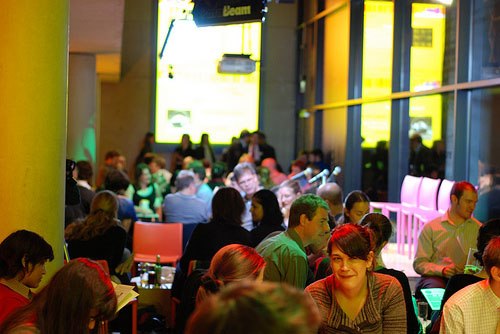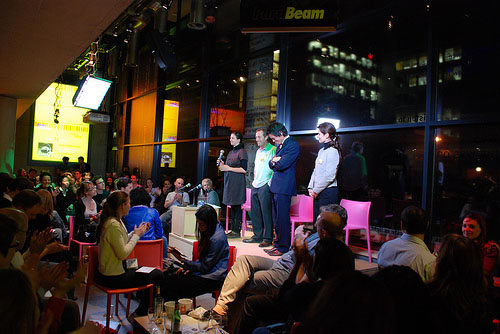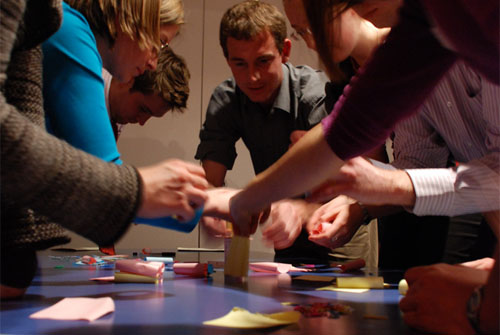
Space Station Dana
StreetlightTransplantations TourSpace Station Dana was the third Dana Centre game from mysterious adventure agency Coney, and the second I was involved in. The Dana Centre is brilliant — free evening events exploring particular aspects of science, usually in the form of talks and lectures and discussions, but with occasional deviations into demonstrations, debates, dinners and in this case even a game.

We wanted to combine expert discussion with a chance for participants to "become an astronaut", or at least to go through a series of tests to find out whether they'd make a good astronaut or not. When we found out just how many experts were able to talk, however, we had to rethink the structure of the event: we had not just Iya Whitely, a psychologist for the SEA; Kevin Fong, co-Director of the UCL Centre for Aviation Science; and Doug Millard, the Science Museumís Senior Curator for Space Technology; but also Jean-Francois Clervoys, an actual real astronaut who has been into actual real space more than once.
Well, once you've got that many experts, including a genuine real actual genuine astronaut, there's a limit to just how much of a game you can fit into two hours. In fact, we barely had time for all the speakers to talk, even without a game. As is so often the case, the problem turned out to be the solution in disguise: we'd use the game as a framework for the event as a whole, and a way of letting people manage what they were interested in and what they wanted to find out more about, without letting the event fall into fragments.

After an introduction, we decided, the group would split into three, and players should find out more about space psychology, physiology or history depending on their interest. After each talk, they'd have a chance to test themselves in a related minigame (bouncing mirrors off lasers, manouevring along an obstacle course, building co-operative post-it note structures), with their scores recorded in the book. Each session would run twice, letting players find out more about the two areas they were most interested in; and then the group would re-unite to hear more from Jean-Francois Clervoys.

During the talk, we were behind scenes frantically adding up the scores that people had recorded in their game books - not just their successes at the minigames, but also their knowledge of space, and aspects like their height, age, whether they had a degree (and what in, if so) that also play into real decisions about astronaut applications. And at the end of the evening, the three "continents" that had been most successful overall got to send their top astronaut into space - or at least up to the podium for applause and free tickets to the Science Museum's Space Station 3D IMAX film.
Links:
- The Dana Centre, where Space Station Dana took place
- Event listing for Space Station Dana
- Photographs of the event from Gaeten Lee (source of the photos above)